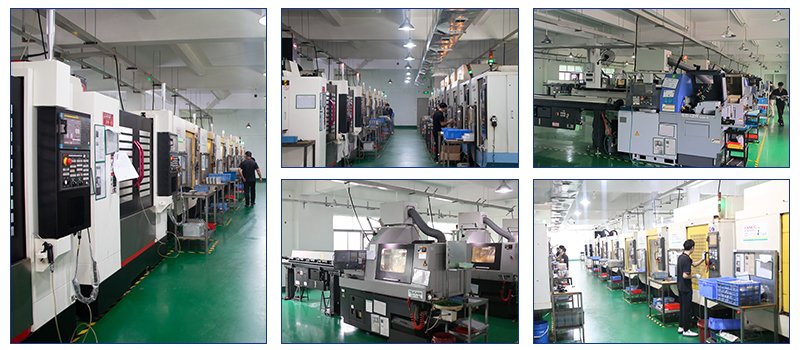When it comes to creating prototypes, CNC machining is often the go-to solution for its precision, versatility, and reliability. But let’s be honest—CNC machining doesn’t come cheap. If you’ve ever been shocked by the price of a prototype, you’re not alone. So why exactly is CNC machining for prototyping so expensive? Let’s break it down, piece by piece, and uncover the factors driving up those costs.
Understanding the Basics: What Makes CNC Machining Unique?
Before diving into the costs, let’s start with a simple question: what makes CNC machining so special? CNC, or Computer Numerical Control, machining uses automated tools to shape materials with incredible accuracy. Whether it’s turning, milling, or 5-axis machining, CNC machines are capable of producing parts with tolerances as tight as a few microns.
But achieving this level of precision requires more than just a fancy machine. It demands skilled operators, high-quality materials, and a lot of preparation. Here’s where the expenses start to add up.

Material Costs: Quality Comes at a Price
Have you ever thought about what goes into selecting materials for CNC machining? Unlike mass production, prototyping often involves using premium-grade materials, which can be significantly pricier. Whether you’re working with aluminum, stainless steel, or specialized plastics, the raw materials need to meet strict quality standards to ensure the prototype performs as intended.
For example:
- Metal alloys like titanium or Inconel are expensive but essential for high-performance applications.
- Certain plastics like PEEK or Delrin offer excellent properties but can cost several times more than standard alternatives.
Moreover, material waste is another hidden cost. CNC machining, especially milling or 5-axis machining, often involves cutting away large amounts of material to achieve the desired shape, which means a lot of waste ends up on the floor.
Machine Time: Precision Takes Time
Here’s a fun fact: CNC machines don’t work faster just because they’re expensive. In fact, the opposite is often true. The higher the precision, the slower the machining process. Operations like carving complex geometries, adding intricate details, or achieving tight tolerances can take hours or even days to complete.
Why does this matter? CNC shops typically charge by machine time. So, the longer it takes to produce your prototype, the higher the cost.
Setup Costs: The Hidden Time Sink
If you think CNC machining costs are just about running the machine, think again. Setting up the process can be just as time-consuming. Each prototype requires:
- Custom programming: Writing the G-code that tells the machine how to move.
- Fixture design: Creating tools to hold the part securely during machining.
- Tooling selection: Choosing the right cutting tools for the job.
Unlike production runs, where the setup costs are spread across thousands of units, prototyping has to bear the full burden. This is why one-off or low-volume prototypes can feel disproportionately expensive.

Labor: Expertise Doesn’t Come Cheap
While CNC machines are automated, they still require skilled operators to oversee the process. From programming to quality inspection, human expertise is essential at every step. And let’s not forget, the operators handling 5-axis machining or complex turning operations are highly specialized professionals who don’t come cheap.
Post-Processing: Beyond the Machining
If you thought the work was done once the machining stops, think again. Most prototypes require some form of post-processing, such as:
- Surface finishing (e.g., polishing, anodizing, or painting)
- Deburring to remove sharp edges
- Quality control to ensure the part meets specifications
Each of these steps adds time and cost to the project.
Equipment Costs: A Major Investment
Have you ever wondered how much a CNC machine costs? High-end 5-axis machining centers can run upwards of $500,000. And that’s before factoring in maintenance, tooling, and software. CNC shops need to recoup these investments, which is why you’ll see higher rates for specialized equipment.
Small Volume, High Price
When you’re only making one or a few prototypes, the economies of scale don’t work in your favor. For mass production, costs like programming, setup, and tooling are spread across thousands of parts. But for prototyping, you’re shouldering all those costs for a single piece.
Quality Control: Zero Room for Error
Prototypes are often used for critical testing or presentations, meaning there’s zero room for error. Achieving this level of perfection requires rigorous quality control processes, including:
- Dimensional inspections using CMMs (Coordinate Measuring Machines)
- Material testing
- Visual inspections
These steps, while essential, add to the overall cost.
How to Manage Costs Without Sacrificing Quality
Feeling overwhelmed? Don’t worry; there are ways to manage CNC machining costs for your prototypes:
- Optimize your design: Simplify features that don’t impact functionality.
- Choose cost-effective materials: Unless you need aerospace-grade metals, consider more affordable options.
- Discuss your budget with the CNC shop: Many shops, like yl-machining, can recommend ways to cut costs without compromising quality.
Conclusion: You Get What You Pay For
At the end of the day, CNC machining for prototyping is expensive because it delivers unparalleled precision, reliability, and flexibility. While the costs can be high, they’re often justified by the quality of the final product. If you’re working on a critical project and need a partner who understands the nuances of CNC machining, yl-machining is here to help.
Have more questions or a project in mind? Let’s chat—I’d love to hear about your ideas and help you bring them to life.




